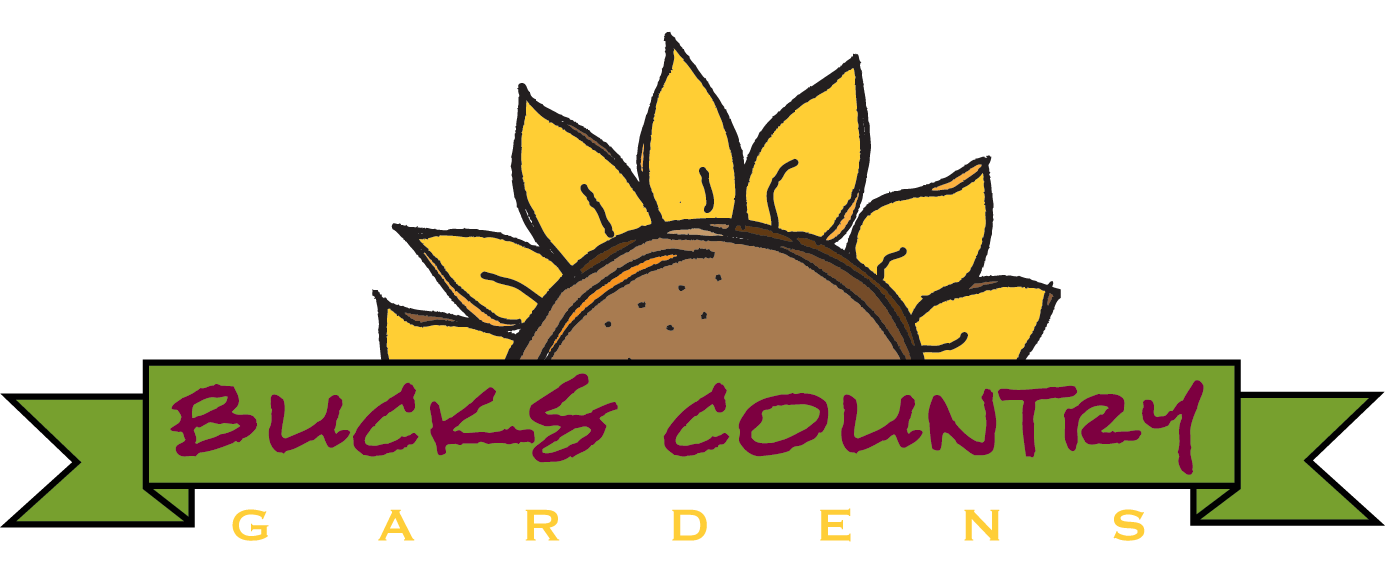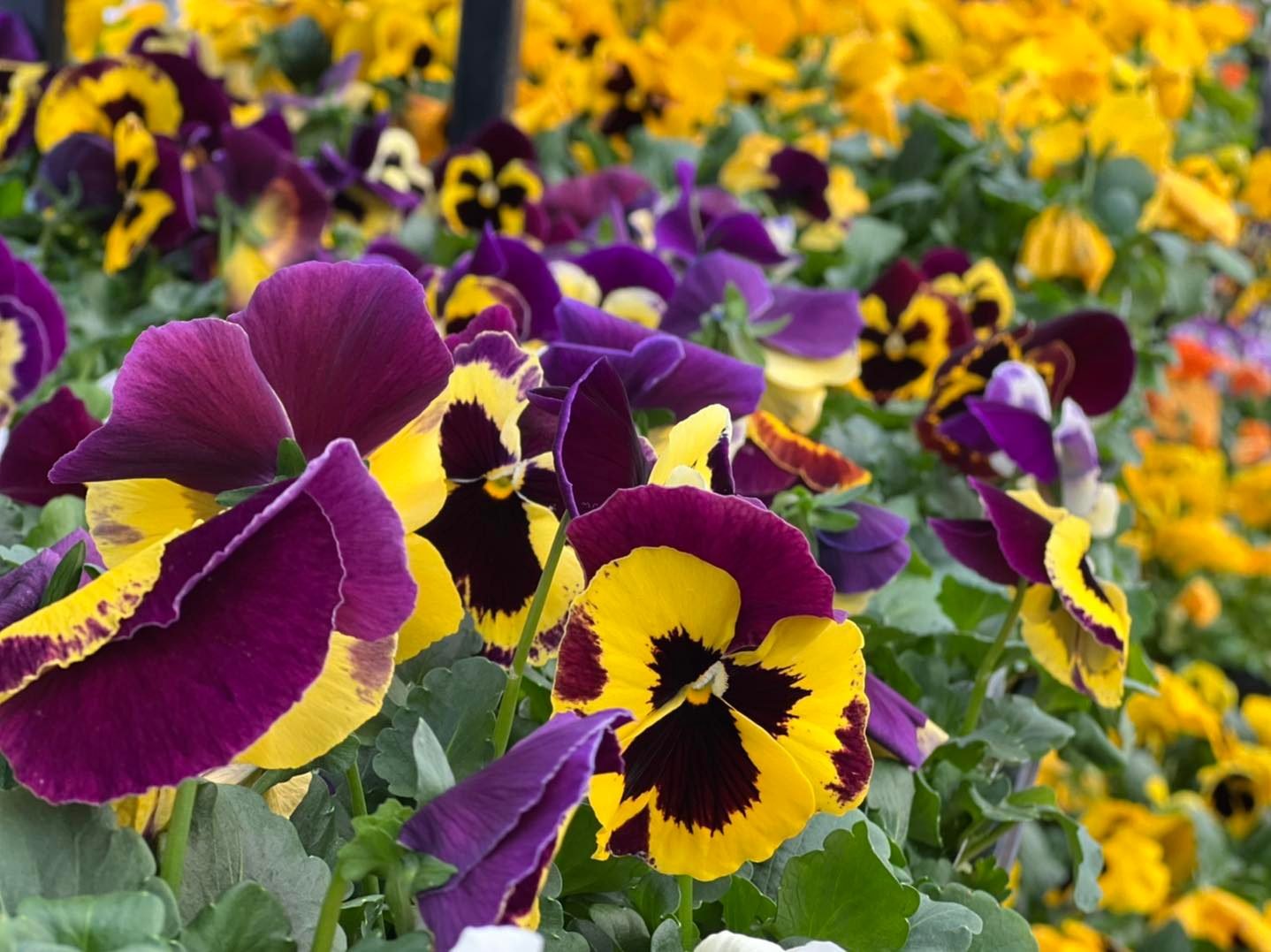March, April and may gardening
Written by: Amy Sanchez-Hamilton- Landscape Design and Sales
We have created a basic calendar for March, April, and May that goes over the most common garden “to do’s.” Hopefully it can save you some search time, so you have more garden time!
March
Make your bed:
It’s time to build your garden beds and prep them (if they are not already done).
Make sure to add organic amendments, such as Bumper Crop, and/or last year’s compost
Clean debris from beds
Finish perennial and ornamental grass cut backs
Clean up evergreen perennials (liriope, heuchera, lenton rose, carex)
Divide perennials when you see them start to wake up
Pruning:
Prune shrubs that bloom on NEW wood (spirea, smooth and panicle hydrangea, barberry, abelia) and certain evergreens
Remove deadwood
Prune damaged branches from winter
Prune fruit trees in late winter, early spring before flush
As always, if you are unsure of what to prune and when, please contact us at Bucks Country Gardens for help with your projects.
What to plant:
Uncovered, you can add potatoes and onion sets to your vegetable garden as soon as the ground is workable. I also transplant some strawberries that have gone rogue at this time.
Plant cool season crop seeds: lettuce, spinach, peas, broccoli, cabbage, brussels sprouts, cauliflower, kale, collards, swiss chard, carrots, beats, radish, escarole, arugula. *Note: If these are direct sow they will take a while to germinate unless covered with row covers. Plant starter plants as soon as they are available.
Start warm season crops seeds indoors: tomatoes, peppers, and eggplant
Plant hardy perennial herbs: thyme, rosemary, sage, and chives
Plant spring annuals, summer and fall bulbs
April
Many of the same things can be done in April as you have done in March (if they are not done already).
What to plant:
You may want to plant secondary crops of your winter veggies to lengthen your harvest
Start warm season crop seeds indoors: beans, summer squash, and cucumber
Plant the remainder of herbs by end of month *Remember: Keep mints in planters!
Plant summer and fall bulbs
Mulching:
Time to mulch! Mulching in April allows you to see where the perennial root crowns are, and gives fairly easy access to most parts of the garden as a lot of items are not fully flushed out yet.
Bucks Country Gardens is fully stocked by mid-April and will have wonderful availability at this time. Stay in the loop with our weekly plant features and promotions!
May
Time to start reaping the benefits of gardening! Depending on when and how you started planting (starter plants vs. seeds and whether or not they were covered), this month you should be seeing your first spring harvest of your cool season crops.
What to plant:
Make sure to plant one more round of cool season crops at the beginning of the month to harvest before the summer
You can direct sow cucumber, corn, and squash at this time. *Please note: Direct sowing and starting your own seeds are good for gardeners that grow a lot of that type of plant and have more time to dedicate to their veggie garden.
For the gardeners that are doing smaller container gardens, or are short on time, purchasing starter plants may be the way to go for you. This saves time in prep and growing. We recommend planting tender plants after May 15th, the frost-free date. It is unlikely for frost to occur after this date.
All herbs can be planted now
Plant summer annuals
You can find starter plants at Bucks Country Gardens throughout the growing season, as well as tools and materials needed to start seeds.
Additional Tips
Tomatoes, eggplant, peppers, broccoli, Brussels sprouts, and cauliflower: I find these to be more challenging to direct sow because the seeds take longer to mature. I have found better results by starting indoors or buying starter plants for earlier harvest.
Cucumbers, summer and winter squash, corn, and bean seeds: I germinate by wrapping them in damp paper towels, and keeping them moist for about a week or so in a south-facing window. You will see in about that time they will germinate in the towel. You can then plant them in the garden. This saves you time, money, and space, not needing extra trays to start those items.
I always direct sow the following seeds: lettuce, spinach, beats, radish, carrots, collards, Swiss chard, kale, escarole, and arugula. If you do not eat a lot of these vegetables, purchasing starter plants may be best.
The following herbs and veggies have a tendency to self-seed in your garden if you let them go to seed: leafy greens, dill, tomatoes, basil, cilantro, and lemon balm (BE CAREFUL). Annuals that self seed, such as marigolds, self seed every year in my veggie garden and are great companion plants.
For the adventurous type, I have had success re-growing the following from market scrap: romaine lettuce, celery, green onions, leeks, potatoes, garlic, basil, and mint. Some root and bulb veggies are treated with a sprout inhibitor, but there shouldn’t be an issue with this if using older vegetables that are starting to sprout. Cut potatoes so that there are about two eyes per piece. You also don’t typically know what cultivars are purchased from the market.
For more information:
Call Bucks Country Gardens for any questions concerning your plant material or contact our Landscape Design/Build division if you are looking for ideas for your veggie or planting garden beds.
You can also use the following links for more in depth info and handy graphs of when to start, plant, and harvest your favorite veggies:
Planting dates calendar for Philadelphia, PA- http://www.almanac.com/gardening/planting-dates/PA/Philadelphia
What to plant in the Mid-Atlantic region now- http://www.motherearthnews.com/organic-gardening/mid-atlantic-gardening-region
General veggie garden planner- http://www.almanac.com/content/vegetable-garden-planner
Veggie gardening for PA- http://extension.psu.edu/plants/vegetable-fruit/production-guides/vegetable-gardening-1/Vegetable-Gardening.pdf
Written by: Amy Sanchez-Hamilton- Landscape Design and Sales

